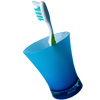Children in poorest areas have 70% more dental decay
Young children from the lowest socioeconomic areas have about 70% more dental decay than children from the highest socioeconomic areas, according to a report released today by the Australian Institute of Health and Welfare (AIHW).
The report, Dental decay among Australian children, shows poorer oral health in disadvantaged areas across all states and territories (for which data were available) although the extent was varied.
‘Of children aged 5–6 years in Western Australia, dental decay was 22% higher for children in the lowest socioeconomic areas than for those in the highest socioeconomic areas, while in the Northern Territory the difference was a much greater 139%,’ said AIHW spokesperson Professor Kaye Roberts-Thomson.
New South Wales and Victoria were not included in the report as data were unavailable.
Among children aged 5–6 years, nearly half had a history of dental decay in the deciduous teeth (also known as baby teeth) and the average number of decayed, missing and filled teeth was 2.
Of children aged 12 years, nearly half had a history of dental decay in the permanent teeth and the average number of decayed, missing and filled teeth was 1.1.
‘More than 40% of Australian children aged 5–6 years had untreated decay and a quarter of Australian children aged 12 years had untreated decay,’ Professor Roberts-Thomson said.
The proportion of children aged 5–6 years with untreated decay varied among states and territories from 29.3% in the Australian Capital Territory to 49.7% in the Northern Territory.
There was no difference in prevalence of decay between boys and girls.
A second report released on 3rd of August, Changes in child toothbrushing over time, shows that while toothbrushing is almost universally practised in Australia, there has been a decline in toothbrushing frequency among children.
Between 1993 and 2000, the proportion of children brushing less than once a day when they began brushing their teeth almost doubled from 8% to 15%. The proportion brushing twice a day reduced from a high of 44% in 1993 to 32% in 2000.
The proportion of children brushing with low-fluoride children’s toothpaste, as is recommended for children aged 6 years or under, has increased. Most young children now use low-fluoride toothpaste.
(Source: Australian Institute of Health and Welfare (AIHW))
More information
 | For more information on dental health in children, including teething, hygiene and nutrition for good teeth, as well as the importance of dental check-ups, see Dental Health in Children. |
Dates
Tags
Created by:

 Login
Login














